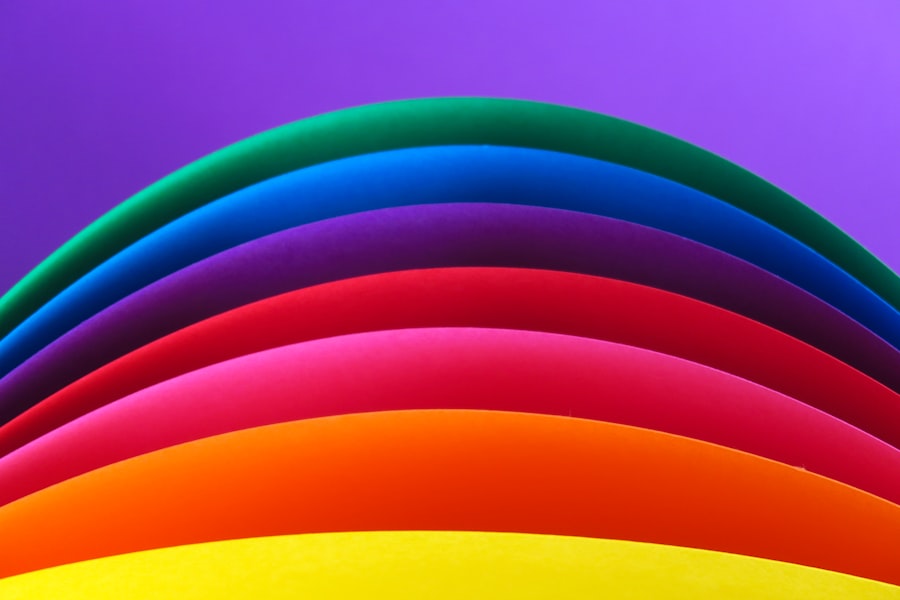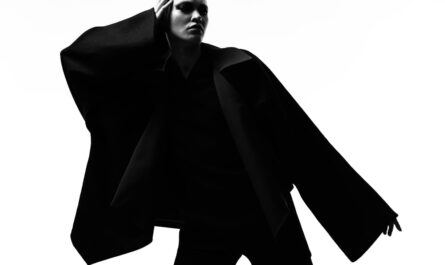Jamaican culture has significantly influenced the global fashion industry through its vibrant aesthetic and diverse cultural heritage. Designers worldwide have drawn inspiration from Jamaica’s rich traditions, incorporating elements such as bold colors, intricate patterns, and unique textures into their creations. This influence is evident in various aspects of fashion, from haute couture to streetwear.
Traditional Jamaican garments and cultural symbols have played a crucial role in shaping fashion trends. The iconic Rastafarian colors of red, green, and gold have become recognizable elements in many designs. Additionally, the impact of reggae music and dancehall culture has been particularly notable in urban fashion and streetwear.
The relaxed and carefree Jamaican lifestyle has also influenced fashion silhouettes, contributing to the popularity of casual and comfortable clothing styles. This laid-back approach to dressing has resonated with consumers globally, further cementing Jamaica’s impact on the fashion world. The distinctive aesthetic of Jamaican culture continues to inspire designers and fashion enthusiasts, ensuring its lasting influence on the industry.
From high-end fashion houses to independent designers, the vibrant spirit of Jamaica remains a constant source of creativity and innovation in the world of fashion.
Key Takeaways
- Jamaican culture has had a significant influence on fashion, particularly in the use of bold colors and prints.
- Traditional Jamaican garments have been adapted to modern fashion, blending traditional elements with contemporary styles.
- Reggae music has played a major role in shaping Jamaican fashion, inspiring bold and vibrant designs.
- Jamaican designers are making a mark in the global fashion industry, bringing their unique perspective and creativity to the forefront.
- Accessories play a significant role in Jamaican fashion, adding a touch of individuality and cultural significance to outfits.
Traditional Jamaican Garments and Their Modern Adaptations
Rastafarian Colors Reimagined
Traditional Jamaican garments, such as the Rastafarian colors of red, green, and gold, have been reinterpreted and modernized by designers to create contemporary and stylish pieces that pay homage to Jamaican culture. The iconic colors of the Rastafarian flag have been incorporated into streetwear and urban fashion, with designers using these bold and vibrant hues to create eye-catching and statement-making pieces.
Timeless Garments Revamped
Additionally, traditional Jamaican garments such as the bandana headscarf and the dashiki shirt have been reimagined and adapted to suit modern tastes, with designers incorporating these elements into their collections to add a touch of Jamaican flair to their designs.
Celebrating Heritage through Fabric
Furthermore, traditional Jamaican garments such as the kente cloth and the madras fabric have been used by designers to create unique and culturally significant pieces that celebrate the rich heritage of Jamaica. These traditional fabrics have been incorporated into contemporary fashion designs, with their bold and colorful patterns adding a sense of authenticity and cultural significance to the garments.
Overall, the modern adaptations of traditional Jamaican garments have allowed designers to pay homage to Jamaican culture while creating stylish and relevant pieces that resonate with a global audience.
The Impact of Reggae Music on Jamaican Fashion

Reggae music has had a profound impact on Jamaican fashion, with its laid-back and rebellious spirit influencing the style and aesthetic of the country’s fashion scene. The iconic looks of reggae musicians such as Bob Marley and Peter Tosh have become synonymous with Jamaican fashion, with their signature dreadlocks, Rastafarian colors, and relaxed attire inspiring designers and fashion enthusiasts around the world. The influence of reggae music can be seen in the use of bold colors, relaxed silhouettes, and eclectic patterns that have become hallmarks of Jamaican fashion.
Furthermore, reggae music has also played a significant role in shaping the attitude and mindset of Jamaican fashion, with its messages of unity, love, and social consciousness resonating with designers who seek to create meaningful and impactful designs. The rebellious and anti-establishment ethos of reggae music has also been reflected in the streetwear and urban fashion scenes in Jamaica, with designers using fashion as a form of self-expression and empowerment. Overall, the impact of reggae music on Jamaican fashion has been profound, with its influence continuing to shape the style and aesthetic of the country’s fashion industry.
The Rise of Jamaican Designers in the Global Fashion Industry
| Designer | Brand | Global Recognition |
|---|---|---|
| Grace Wales Bonner | Wales Bonner | Winner of the LVMH Prize for Young Fashion Designers |
| Carly Cushnie | Cushnie et Ochs | Featured in Vogue and worn by Michelle Obama |
| Matthew Harris | Palmer Harding | Stocked in major retailers like Net-a-Porter and Selfridges |
In recent years, there has been a noticeable rise in the prominence of Jamaican designers in the global fashion industry, with their unique perspective and cultural heritage setting them apart in a competitive market. Jamaican designers such as Cedella Marley, daughter of reggae legend Bob Marley, have gained international recognition for their innovative designs that celebrate Jamaican culture and heritage. These designers have brought a fresh and authentic perspective to the global fashion scene, drawing inspiration from their roots to create collections that are both stylish and culturally significant.
The rise of Jamaican designers in the global fashion industry has also been fueled by a growing interest in diverse and inclusive representation within the fashion world. Designers from Jamaica have been able to carve out a niche for themselves by embracing their cultural identity and incorporating elements of Jamaican culture into their designs. This has allowed them to stand out in an industry that often prioritizes Western aesthetics, bringing much-needed diversity and representation to the forefront.
Overall, the rise of Jamaican designers in the global fashion industry has been a testament to the power of cultural authenticity and creativity in shaping the future of fashion.
The Use of Bold Colors and Prints in Jamaican Fashion
One of the defining characteristics of Jamaican fashion is the use of bold colors and prints that reflect the vibrant and lively spirit of the country’s culture. From the iconic Rastafarian colors of red, green, and gold to the intricate patterns inspired by traditional Jamaican textiles, bold colors and prints have become synonymous with Jamaican fashion. Designers have embraced these vibrant elements to create eye-catching and statement-making pieces that capture the essence of Jamaican style.
The use of bold colors and prints in Jamaican fashion has also been a reflection of the country’s rich cultural heritage, with designers drawing inspiration from traditional textiles such as kente cloth and madras fabric to create contemporary designs that pay homage to Jamaica’s history. These bold colors and prints have become a defining feature of Jamaican fashion, setting it apart from other global fashion trends and establishing it as a unique and distinctive aesthetic. Overall, the use of bold colors and prints in Jamaican fashion has been a celebration of the country’s rich cultural heritage, allowing designers to create visually stunning pieces that capture the essence of Jamaica.
The Significance of Accessories in Jamaican Fashion

Cultural Significance of Accessories
These accessories are more than just decorative elements; they carry cultural significance, often reflecting the country’s history, beliefs, and values. They serve as a means of cultural expression, allowing individuals to showcase their personal style while embracing their cultural identity.
Self-Expression and Practicality
Accessories in Jamaican fashion are often used as a form of self-expression, whether it’s a handwoven straw hat or a beaded necklace inspired by traditional African jewelry. Additionally, accessories also play a practical role, providing protection from the sun or adding a touch of glamour to everyday attire.
Beyond Mere Adornment
Overall, the significance of accessories in Jamaican fashion goes beyond mere adornment, serving as a means of cultural expression and individuality. They are an integral part of Jamaican fashion, reflecting the country’s diverse cultural influences and allowing individuals to express themselves while embracing their cultural heritage.
The Future of Jamaican Fashion: Embracing Sustainability and Ethical Practices
As the global fashion industry continues to evolve, there is a growing emphasis on sustainability and ethical practices within the industry, and Jamaica is no exception. The future of Jamaican fashion is increasingly focused on embracing sustainable materials, ethical production methods, and environmentally conscious practices. Designers in Jamaica are exploring ways to minimize their environmental impact by using eco-friendly fabrics, reducing waste through upcycling and recycling, and supporting local artisans and craftsmen.
Furthermore, there is a growing movement towards ethical production practices within the Jamaican fashion industry, with an emphasis on fair labor practices, transparency in the supply chain, and supporting local communities. Designers are increasingly seeking to create positive social impact through their work by empowering local artisans, preserving traditional craftsmanship, and contributing to economic development within Jamaica. Overall, the future of Jamaican fashion is one that embraces sustainability and ethical practices, reflecting a commitment to preserving the environment and supporting local communities while celebrating the rich cultural heritage of Jamaica.
In conclusion, Jamaican culture has had a profound influence on the global fashion industry, with its vibrant aesthetic, traditional garments, reggae music, bold colors and prints, accessories, and rising designers shaping the future of fashion. The unique perspective and cultural heritage of Jamaica have set it apart in a competitive market while also bringing much-needed diversity and representation to the forefront. As Jamaica continues to embrace sustainability and ethical practices within its fashion industry, it is poised to make an even greater impact on global fashion trends while celebrating its rich cultural heritage for years to come.
If you’re interested in learning more about Jamaican fashion, you should check out Crystal Weston’s article on the topic. In her piece, Weston explores the vibrant and unique styles that have emerged from Jamaica, and how they have influenced the global fashion industry. You can read the full article here.
FAQs
What is Jamaican fashion?
Jamaican fashion refers to the unique and vibrant style of clothing and accessories that are influenced by the culture, history, and lifestyle of Jamaica. It often incorporates bold colors, intricate patterns, and a mix of traditional and modern elements.
What are some key elements of Jamaican fashion?
Key elements of Jamaican fashion include the use of bright and bold colors, traditional African and Caribbean prints, relaxed and comfortable silhouettes, and the incorporation of natural materials such as cotton and linen. Additionally, accessories such as head wraps, beaded jewelry, and straw hats are often featured in Jamaican fashion.
What are some traditional clothing items in Jamaican fashion?
Traditional clothing items in Jamaican fashion include the “bandana” fabric, which is often used to make dresses, skirts, and head wraps. The “dashiki” shirt, a loose-fitting garment with a V-shaped collar, is also a popular traditional clothing item in Jamaican fashion.
How has Jamaican fashion influenced global fashion trends?
Jamaican fashion has influenced global fashion trends through its use of bold colors, vibrant patterns, and relaxed silhouettes. Elements of Jamaican fashion can be seen in the designs of international fashion designers, as well as in the street style and festival fashion around the world.
What are some popular Jamaican fashion designers and brands?
Some popular Jamaican fashion designers and brands include Cedella Marley, daughter of Bob Marley, who has her own fashion line; as well as brands like Keneea Linton, Mutamba, and Meiling, which are known for their unique and innovative designs inspired by Jamaican culture and heritage.



